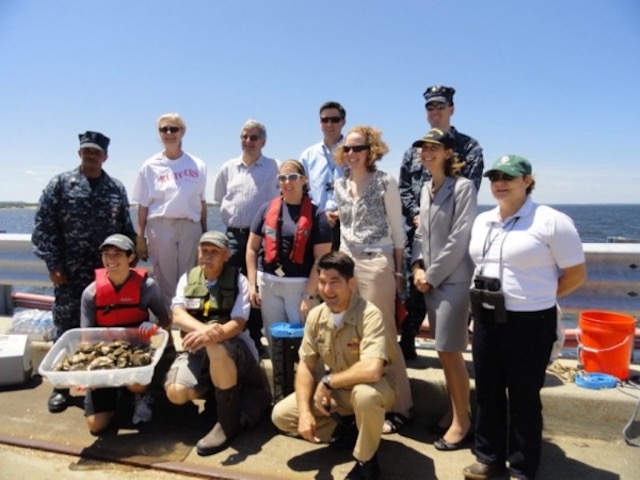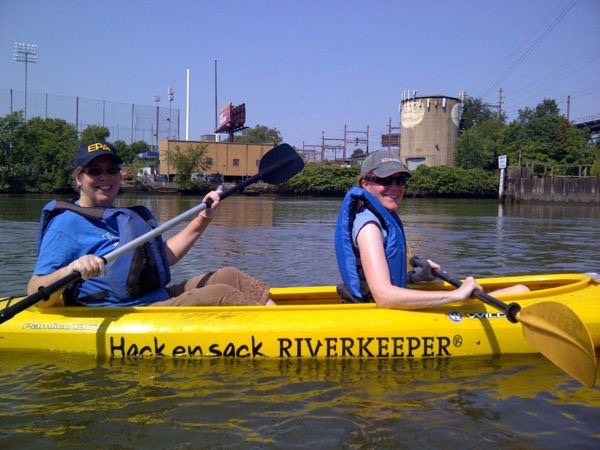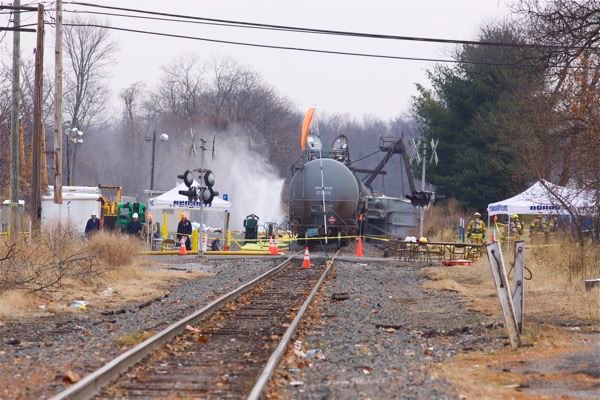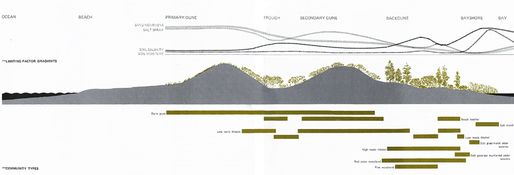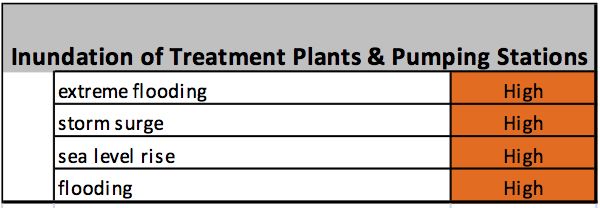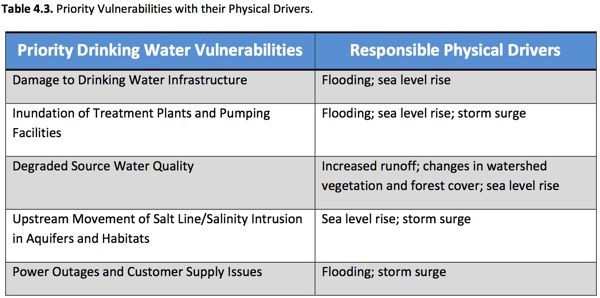Forty Policy Questions For Gov. Murphy’s DEP Commissioner’s Senate Confirmation Hearing
While I don’t know if the Senate Judiciary Committee has set a date yet, Gov. Murphy’s nominee for DEP Commissioner, Catherine McCabe, soon will face a Senate confirmation hearing.
In an effort to educate Committee members and inform the public debate, today I post this open letter as a list of suggested questions.
In fairness, I just gave a heads up to Ms. McCabe via email:
Dear Commissioner McCabe – We have not met, but I thought you might appreciate a heads up on some questions I suggested for your confirmation hearing. See the list below.
FYI, when Brad Campbell took the DEP reins, he hired me and tasked me with preparing what he called an “honest baseline” Report. The objective of that effort was to get all the skeletons out. He directed each Assistant Commissioner to prepare a “vulnerability assessment” of their programs that I was to use as the basis for the Report. (e.g. look at this “vulnerability assessment” on the toxic site cleanup program provided by former Assistant Commissioner Susan Boyle.]
You might want to consider a similar initiative.
Respectfully,
Dear Members of the Judiciary Committee:
I write to you as a longtime environmental professional and former 13 year DEP veteran in order to suggest focused policy questions you may wish to pose to Acting DEP Commissioner McCabe during confirmation hearings.
Acting Commissioner McCabe faces huge challenges after 8 years of rollbacks and DEP institutional erosion under the Christie administration’s “regulatory relief” and “red tape” policies. I was faced with addressing very similar issues in my capacity as policy advisor to former DEP Commissioner Bradley Campbell, after 8 years of Gov. Whitman’s “Open For Business” policies and DEP budget cuts.
I urge your consideration of the following questions:
1. In May 2010, the NJ DEP issued a Report that found over 500 unregulated chemicals in NJ water supply & that granular activated carbon (GAC) treatment was cost effective. I wrote:
DEP scientists presented a Report to the NJ Drinking Water Quality Institute on May 7, 2010.
The Report, entitled “Investigations Related to a ‘Treatment-Based’ Regulatory Approach to Address Unregulated Contaminants in Drinking Water“ found over 500 unregulated chemicals are present in NJ drinking water.
It recommended that public water supply systems install treatment to reduce the health risks of these chemicals.
DEP has known about these risks since 1997 – but has failed to act to protect public health.
We are petitioning DEP to develop regulations that require public water supply systems to install treatment systems, monitor for these chemicals, and disclose these risks to consumers.
The DEP denied our petition.
So, will the Murphy DEP continue the ineffective chemical specific risk assessment approach to developing drinking water MCL’s or shift to a Treatment Based Approach, as recommended by DEP scientists almost a decade ago?
[Note: supporting data and technical basis can be found in NJ DEP science and NJ DEP’s “Source Water Assessment Program”, which provides “susceptibility” and “vulnerability assessments” and pollution threats to drinking water sources for every municipality in NJ. Hit the link and look up your town’s threats. You would be shocked by what you find hidden in plain sight and ignored by DEP regulators.]
2. Will the Murphy DEP adopt regulations to quantify and enforce Natural Resource Damage (NRD) injuries in order to fix legal and technical defects found by NJ Court decisions and vulnerabilities that Gov. Christie’s AG found weakened the State’s litigation hand and used as a rationale to settle not further litigate (i.e. Exxon et al)?
3. Will the Murphy DEP repeal Christie DEP rollbacks of stream encroachment (C1 protections), CAFRA (and not just the public access provisions), WQMP, & Highlands regulatory protections?
[Update: apology for the oversight, but one of the last terrible regulations Bob Martin adopted on the way out was the “Forest Stewardship” rules. Will Murphy DEP repeal and repropose rules that protect forest ecosystems, water quality, and incorporate climate change?~~~ end update]
4. Will the Murphy DEP rescind, strengthen, and replace the Christie DEP Water Supply Plan(after holding public hearings throughout the state)?
5. Will the Murphy DEP reverse Christie DEP Clean Water Act TMDL policy for Barnegat Bay & trigger a mandatory watershed-wide TMDL for the entire Bay? (DEP’s water quality monitoring, assessment, and TMDL programs need major overhauls after 8 years of Martin’s neglect and politicization of science).
6. Will the Murphy DEP mandate the statistical 500 year event in all DEP water resource & infrastructure programs to reflect climate change impacts?
7. Will the Murphy DEP act on DEP scientists’ recommendations in a DEP Report to upgrade several streams to Category One status & otherwise expand the C1 program that was stalled by the Christie DEP?
8. Will the Murphy DEP rescind and replace the Christie DEP “Nutrient Criteria Enhancement Plan” & enforce nutrient criteria Surface Water Quality Standards in land use permitting and mandate nutrient removal treatment in NJPDES POTW permits? (POTW = sewage treatment plants)
9. Will the Murphy administration develop a regional land use regulatory planning scheme to protect water resources of the ecologically exceptional, highly vulnerable, and badly neglected Delaware Bayshore? (along the lines of Pinelands and Highlands)
10. Will Gov. Murphy repeal Gov. Christie’s Executive Orders #2 (regulatory relief, federal consistency, pre-proposal review) and Executive Order #3 (Red Tape)?
11. Will Gov. Murphy & DEP incorporate climate change reviews, backed by enforceable standards, retrofit requirements, and offsets, to meet the emission reduction goals of the Global Warming Response Act in all land use, infrastructure, air quality, and water resource permits?
12. Will Gov. Murphy – like NY Gov. Cuomo – direct DEP to deny all fossil infrastructure permits based on Clean Water Act Section 401 Water Quality certification?
13. Will Gov. Murphy reverse Gov. Christie’s water resource infrastructure, State lands, & State Parks privatization policies and rescind Christie privatization Executive Orders (see EO17)?
14. Will the Murphy DEP reverse the Christie DEP State Public Lands logging policies and plans (i.e. Sparta Mountain WMA “Forest Management Plan”, stop privatizing planning for management of state lands and parks by so called conservation groups like NJ Audubon and NJ Future, and revise all similar “Stewardship” initiatives”, et al))
15. Will the Murphy DEP repeal current policy to rely on “BMP’s” and instead enforce NJ Surface Water Quality Standards on forestry, agricultural practices and in freshwater wetlands and land use permits?
16. Will Gov. Murphy issue Executive Orders to expand public involvement in DEP regulatory & permit decisions and develop Urban environmental quality and environmental justice policies, including mandatory Environmental Justice reviews in designated EJ communities?
17. Will the Murphy DEP close many loopholes and gaps in DEP’s site remediation program to protect groundwater resources & water supplies?
18. Will the Murphy DEP abolish the Science Advisory Board, which has gross conflicts of interest and has become a vehicle for undue industry access, politicization of science, and attacks on regulatory public health and environmental protections?
19. Will the Murphy DEP stop issuing new and revoke hundreds of existing DEP approved “Classification Exception Areas” that waive compliance with groundwater quality standards and instead mandate permanent cleanup of groundwater at high risk contaminated sites?
20. Will the Murphy DEP adopt long overdue NJ DEP derived “eco-flow goals” in water allocation regulations, backed by enforceable numeric standards?
21. Will the Murphy DEP begin to enforce exceedences of current water allocation permit limits?
22. Will the Murphy DEP revoke and strengthen DEP’s “Vapor Intrusion Guidance” to eliminate the “phased approach” and instead take a precautionary approach to protect people in their homes from toxic pollution vapors? (e.g. sample indoor air early on).
23. Will the Murphy DEP revive and adopt drinking water MCL for perchlorate proposed by the Corzine DEP and killed by the Christie DEP, as well as 14 other hazardous drinking water contaminants previously recommended by the Drinking Water Quality Institute?
24. Will the Murphy DEP begin to collect market based lease and easement revenues for private use of state lands and natural resources?
25. Will Gov. Murphy support, work with Senator Smith, and sign legislation to eliminate the current$50 million cap on liability for spills?
26. Will Gov. Murphy support and work with Senator Smith to enact water user and development or impervious surface impact fees to fund the multi-billion dollar water infrastructure deficit?
27. Will the Murphy DEP end current DEP policy to rely on “shelter in place” responses to chemical spills and catastrophic releases and begin to develop protective policies for those who live in mapped “off site consequence” areas under NJ State TCPP and federal Clean Air Act ARP programs? (Paulsboro train derailment et al).
28. Will Gov. Murphy use his powers to block “bomb trains” and other unsafe toxic rail and truck shipments through NJ to protect vulnerable communities? How will the administration address these unacceptable risks?
29. What will the Gov. and the Murphy DEP do to promulgate enforceable requirements for reducing risks identified in NJ’s federally mandated Hazard Mitigation Plan?
30. Will the Murphy DEP revoke and reissue the Christie DEP stormwater and CSO permits to include enforceable timetables and technical requirements?
31. Will the Murphy DEP adopt new rules to mandate risk assessment – based on cumulative risk to the most vulnerable populations – and more stringent “advances in the art” (NJ’s legal standard) air pollution controls for Hazardous Air Pollutants (HAPs)
32. Will Gov. Murphy support and work with the legislature to ban importation and disposal of fracking wastewater? Will the DEP use all regulatory tools to restrict such practices?
33. Will the Murphy DEP restore the Commissioner’s Office that conducts department-wide policy, planning, and regulation, while applying DEP’s scientists recommendations? This Office was abolished by the Christie DEP.
34. Will the Murphy DEP eliminate Christie DEP initiatives, programs, and Offices designed to serve corporate interests over protection of public health and the environment, including “culture change”, “customer service”, economic development, dispute resolution, sustainable towns and business, et al?
35. Will the Murphy DEP re-open Bulls Island State Park?
36. Will the Murphy DEP sever all relationships, State funding, and pending projects with NJ Audubon Society?
37. Will the Murphy Administration terminate funding and support of “Sustainable NJ” and stop outsourcing of climate adaptation policies to private groups and deluging responsibility to local governments (without the resources or legal power under NJ Municipal Land Use Law to act)?
38. Will Murphy terminate Christie plans to develop and/or privatize Liberty State Park and terminate all State funding and support for NJ Future, who worked with the Christie DEP in secret?
39. What are the Murphy Administration’s specific plans to get the Pinelands Commission and Highlands Council back on track?
40. Given NJ’s experience with Superstorm Sandy and Gov. Christie’s “Rebuild Madness”, will Gov. Murphy support and sign legislation to:
a) establish a Coastal Commission to conduct regional climate adaptation and land use planning and environmental management?
b) repeal the “right to rebuild” storm damaged properties in CAFRA and the Flood Hazard Control Act?
c) rescind Administrative Order #2012-13, which exempted Sandy rebuild activities from DEP permitting.
[Also see: “A PATH FORWARD FOR THE SHORE”]
Respectfully submitted,
Bill Wolfe
